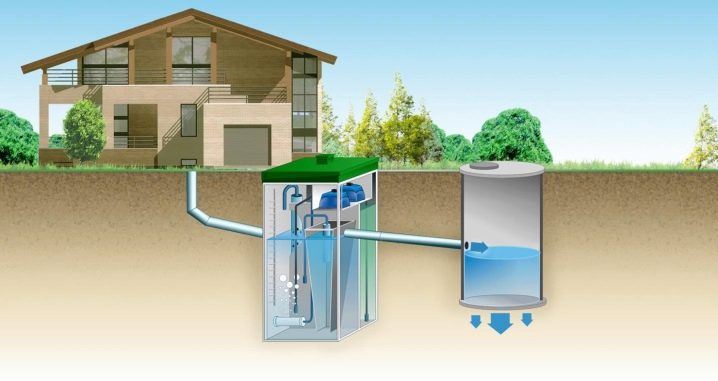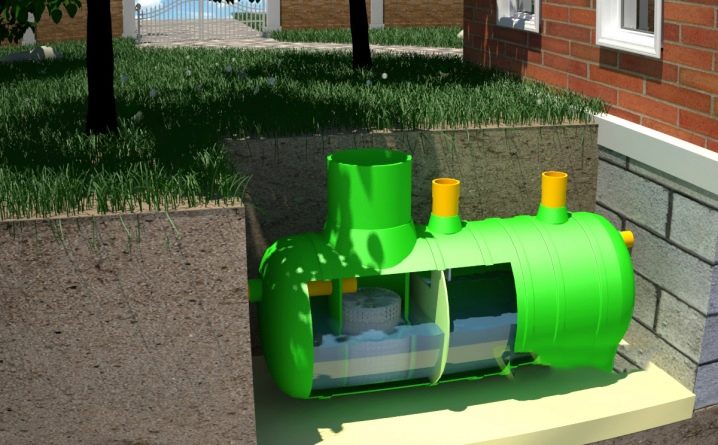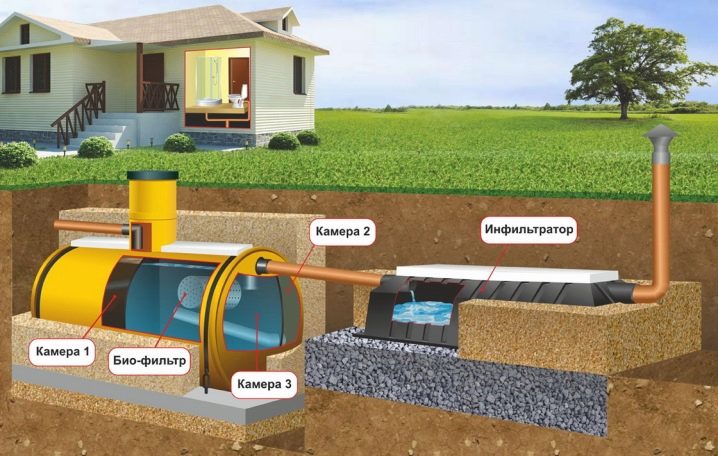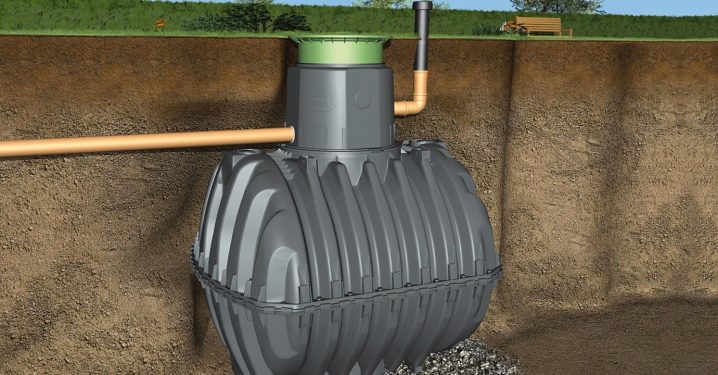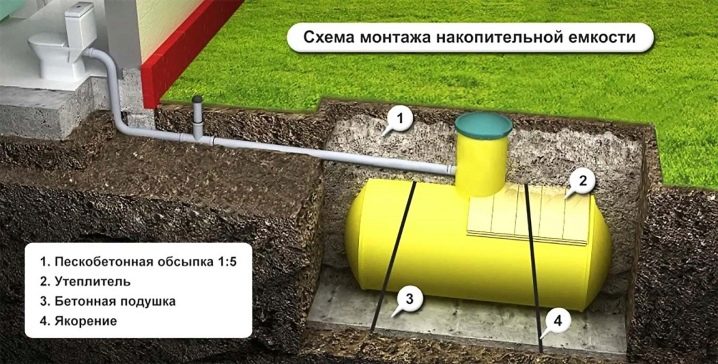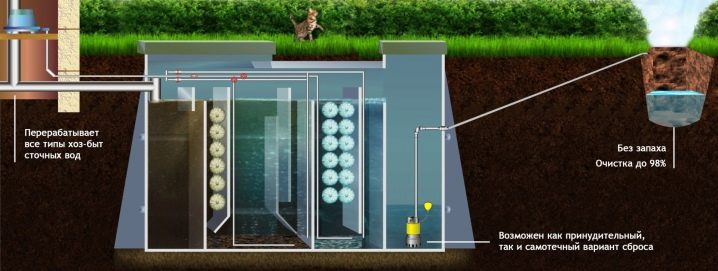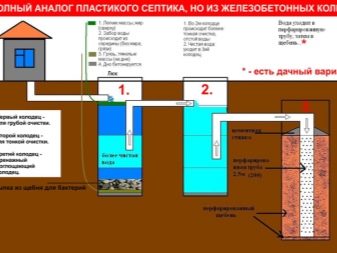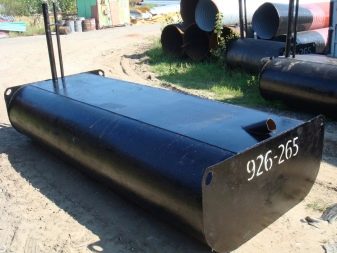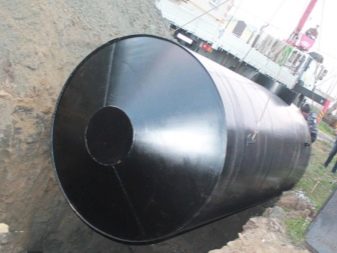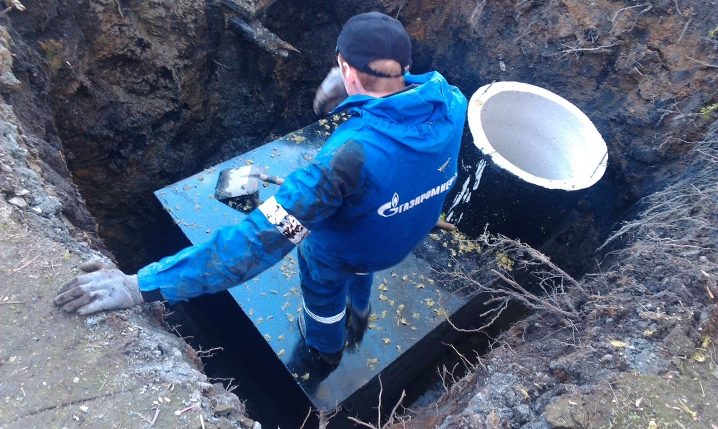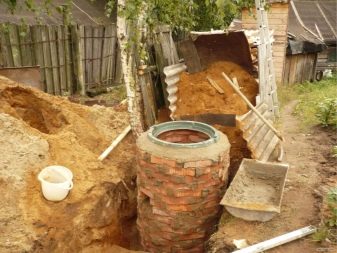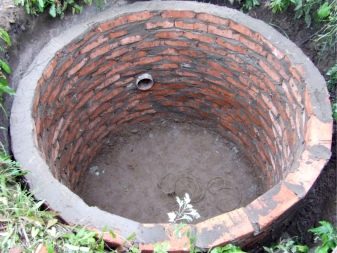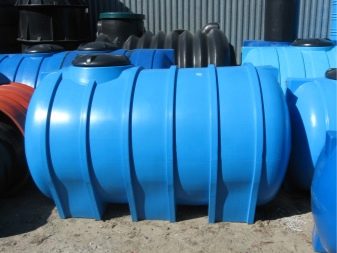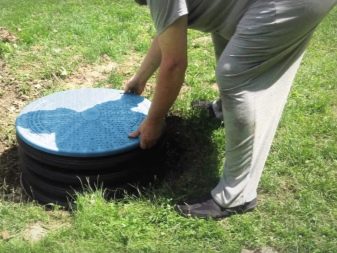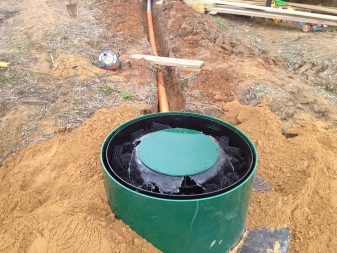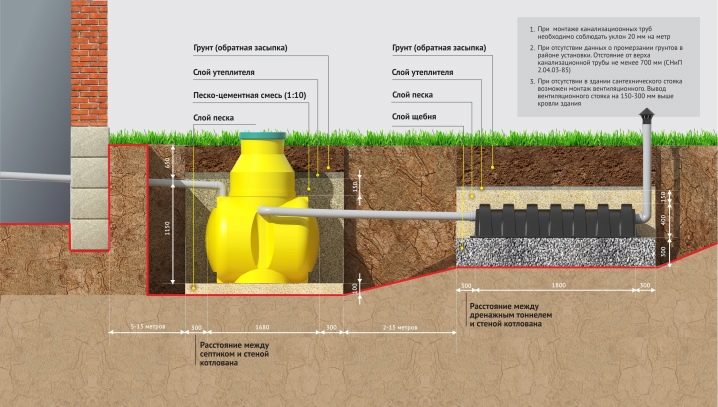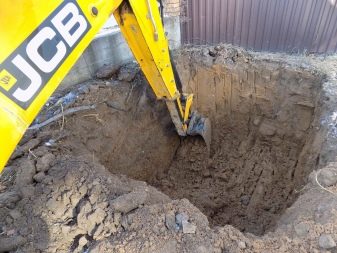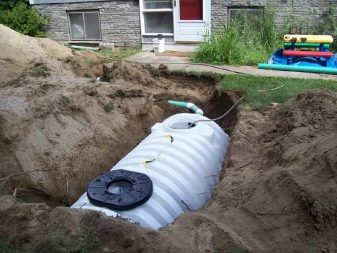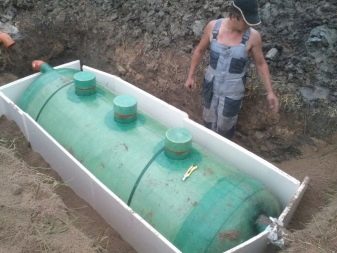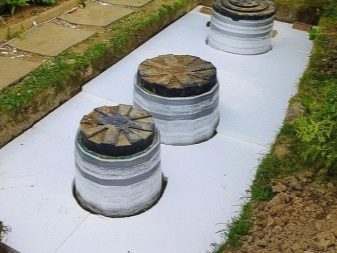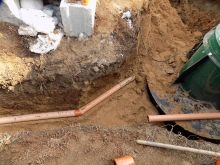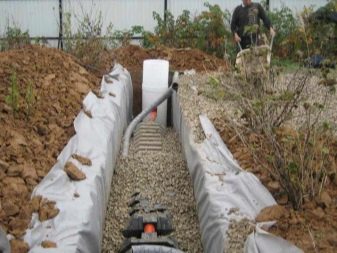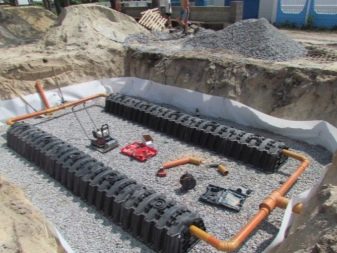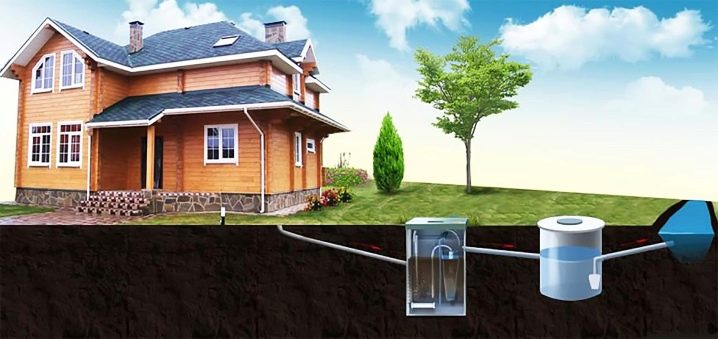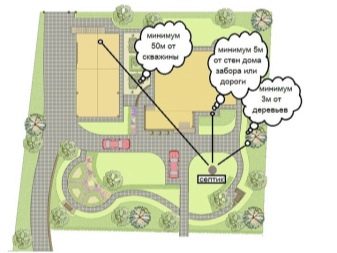Installation of septic tanks: subtleties of operation and recommendations for installation
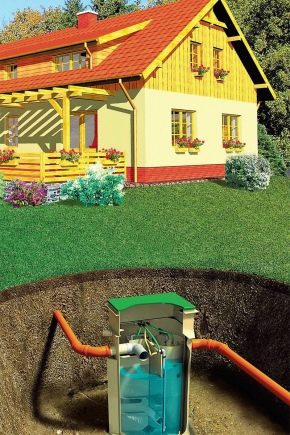
Those times have sunk into oblivion when the convenience of a private house or cottage was on the street, and water had to be carried in buckets from a well. Today, the phrase “house with all amenities” implies first of all the availability of water supply and sewage. And if things are more or less simple with the plumbing (a well is being drilled, water is being carried into the house), then the sewage system has to be approached very seriously. And it's not just that the toilet should be warm and have a system for removing waste outside the house.
All the water used in the house, including sewage and household chemicals, gets into the soil and is spread by groundwater.This causes significant damage to both the fertility of the soil on the site and the ecology as a whole.
Until recently, isolated cesspools with tanks in which sewage was collected were used to drain waste. When filling such a pit, it was required to call the aspener service, the machine pumped out the sludge and water, after which it was possible to forget about the sewage problem for a while. However, cesspools are always an unpleasant smell on the site and regular expenditure of waste disposal.
An alternative option to the sump today is a modern autonomous sewage system - a septic tank.
Special features
A septic tank is a multi-level sewer, where wastewater undergoes a process of settling and filtration. The septic tank differs from cesspools even of the isolated type by tightness and difficult system of processing of sewage. As a result, the septic tank eliminates unpleasant odors at the site, and the water that has undergone treatment is discharged into the soil harmless to the environment.
Cleaning systems are of different types, sizes and cleaning methods.Their choice will depend on the location of the site, the availability of free space and financial opportunities.
Septic tanks consist of several functional compartments interconnected by pipes. The principle of operation is as follows: sewage from the house gets through sewer pipes to the first compartment, where the primary settling of water occurs. Dense masses are deposited, and the distilled water goes to the next compartment for dofiltration. The more such tanks in the cleaning system, the cleaner the water at the outlet to the ground.
Passage through tanks determines the degree of deep or medium wastewater treatment. Septic tanks - from the simplest to the newest biofilter equipment options - are sold in finished form, and teams are usually installed by experienced teams. However, knowing the installation process and the rules for the location of cleaning systems, you can install the septic tank yourself.
Kinds
From whatever materials the septic tank was made, conditionally sewer autonomous systems can be divided into three basic types. This classification reflects the very principle of the system.
Accumulative
The simplest budget option of a septic tank, it is also the starting point in all other types of sewer systems. It is a tank into which wastewater flows through pipes from the house. In fact, this type of septic tank is constructed similarly to a cesspool, as it is filled, it requires pumping off by an after-collecting unit. Suitable for use in homes where no permanent residence is planned.
For example, if you are in the country only in the warm season and you do not plan to install a washing machine, shower or bath, you can empty the tank once a season.
Sometimes storage tanks have to be installed as needed. In cases where:
- there is not enough space near the house to install a complete cleaning system;
- groundwater is too close to the surface;
- nearby is the source of drinking water.
Sludge with soil tertiary treatment
This type of septic tank is an intermediate option between the cumulative pit and a complete cleaning system. It includes several hermetic tanks in which water is settled and removed to the outside already in a purified form. Overflow septic tank can be two-chamber or three-chamber. The cleaning process is carried out in several stages.
- Getting into the first tank, heavy substances by gravity sink to the bottom.
- Water, still polluted and turbid, but already separated from heavy fractions, reaches a certain level in the tank and enters the next compartment through pipes.
- Purified, the liquid enters the filtration well, through which it seeps into the ground. In some embodiments of septic tanks, the system may end up not with a well, but with filtration fields.
Cleaning tanks is required no more than once every two to three years.
Septic tanks with biological cleaning
The modern filtration system of septic tanks with biological treatment allows using water for irrigation at the outlet or pouring it into the pond without harming the environment. Cleaning in bioseptics occurs due to the work of bacteria, whose vital activity decomposes substances into microelements.
Bacteria create fermentation, which passes through two stages - sour and methane. First, proteins, fats and carbohydrates are broken down to the state of lower acids (acetic, butyric), alcohols, hydrogen sulfide and carbon dioxide. In the second stage, decomposition to methane and hydrogen occurs.
A mixture of these gases must be discharged into the atmosphere, so bioseptics must be equipped with a ventilation system.
Materials
For the manufacture of septic tanks used a variety of materials. Simple designs with their own hands can be made of brick, metal or concrete rings. More modern septic tanks are made from plastic and fiberglass.
Concrete rings
Due to their weight, they provide stability and reliability of the design. But this method has a number of significant drawbacks:
- the joints between the rings must be sealed tightly, and it’s not a fact that over time they will not let flow;
- metal reinforcement is susceptible to corrosion in the wells of concrete rings, while the metal will constantly interact with aggressive media, and hence the corrosion processes will not take long;
- for lifting and installation of rings will require the involvement of lifting equipment, which would entail additional waste.
Metal septic tanks
Available at a price and have significant weight. The weight of the product, on the one hand, is a minus during transportation and installation, but on the other, it is a guarantee that the reservoir will not be subject to “floating” on heaving soils.
When buying a septic tank made of metal, you must make sure that the material has undergone a quality treatment with anti-corrosion and waterproofing agents.
There are downsides. The metal has good thermal conductivity, so the water in it can freeze, even if the device is located below the freezing ground. If you do not take care of thermal insulation, then in the frosty winter there is a risk that the sewer system will simply fail. In exceptional cases, a sealed filler from an old drum or tank can be installed as a temporary tool.
Brick septic tank
Quite common in the recent past, the type of pit for the collection of sewage. In the foundation pit, brickwork is made, after which the joints between the bricks for waterproofing are sealed with cement or bitumen.
Polymer constructions
This is a modern version of sewer autonomous systems. The advantages of plastic and fiberglass containers:
- initial tightness, no joints to be insulated;
- resistance to aggressive environment - household chemicals, corrosive substances in wastewater will not destroy or "corrode" the plastic sheet;
- ease of material - to install a septic tank will not need to hire lifting equipment.
But this material has its drawbacks.
- Plastic is sensitive to mechanical damage from the outside and is subject to deformation. This applies to the installation of plastic septic tanks in clay and stony soils.
- Plastic freezes and bursts at very low temperatures. In the northern regions, where the ground is deeply frozen through, variants of fiberglass septic tanks should be considered. Neither temperature drops nor deformations are terrible for this material.
Item selection
The choice of the optimal sewer system is influenced by:
- the size of the chambers based on the frequency of use, the number of people in the house, household and sanitary equipment using water;
- the number of tanks for different levels of cleaning;
- free space on the site;
- remote location from neighbors and reservoirs.
Equally important when choosing a sewer device is its layout and the principle of immersion in the soil.
The tanks can be vertical and horizontal, each type has its own characteristics when located on the site.
If the area allows, then preference is given to a horizontal system. The farther away the final water discharge is, the better. The horizontal layout of the septic tank and choose a high level of groundwater.
Vertical tanks require less space, but they need a deeper pit. With a vertical arrangement, the tank will be below the level of freezing, which means that there is a guarantee that the water in the tanks will not freeze and that the sewage system can function year-round. A vertical device is excluded if groundwater flows close to the ground.
The level of groundwater flow, as well as the degree of soil freezing, can be obtained from hydrometeorological stations by area.
Location determination
When designing a site plan or an already separate arrangement of autonomous sewage, it is necessary to take into account certain nuances. Place a septic tank, adjusting only to the project at home, will not work. The location of the system must comply with the rules and regulations prescribed by regulatory documents. The construction of sewage requires mandatory coordination with the sanitary-epidemiologicalservice in which it is necessary to submit in advance the project of installation according to the norms of SNiP for the installation of septic tanks. This will allow to avoid problems with legislation in the future.
The norms defined for the construction of sewage have good reasons: sewage, not properly treated, leads to the poisoning of fertile soils, groundwater and, as a result, water bodies. In addition to the threat of ecology, there are a number of technological reasons. Accidental accident and depressurization of reservoirs can lead to flooding of the foundation of buildings, and untimely pumping of overfilled containers in the conditions of floods in spring, rains, and heavy snowfall - to the splash of harmful substances onto the territory.
In order to avoid such troubles, the law clearly establishes the rules and regulations relating to the footage of distance from objects.
- From houses and any buildings on the foundation, as well as roads, gas pipes and boundaries of sites, the septic tank should be removed not less than 3-5 meters.
- From sources with drinking water - wells, springs, wells - provides 50 meters. On light sandy soils, the distance should reach 80 meters.If the terrain allows, the sewer system is better to spend in the lowlands relative to water sources.
- From reservoirs with non-flowing water (lake, pond, reservoir), the location of the septic tank should be at least 30 meters.
- From rivers, flowing streams - 10 meters.
Determination of distances is carried out individually for each site, depending on the composition of the soil, the relationship between aquifers, the location of buildings, agricultural areas, trees.
Preparation of the pit
Having determined the optimal place for the installation of the sewer system, you should not hurry with the beginning of work on digging the pit. If you dig a hole in advance before acquiring a structure, then there is a high probability of making mistakes in size, and there is also a risk of spilling the inner layer of the earth and flooding the pit with groundwater.
The sizes and number of holes are calculated based on the configuration and dimensions of the acquired septic tank., and also instructions in the instruction for an arrangement of tanks. Do not forget that a place in the pit should be with a small margin so that the design can be easily lowered to the bottom, as well as for laying insulation.
In some models of septic tanks additional tanks are assumed to drain the process water, which means there will be more trenches. This should be considered in the design process.
As with the installation of any foundation, the bottom of the excavation is necessary to lay a "pillow" of sand and gravel, on which the concrete slab is laid on top for anchoring the septic tank. This is done so that in the process of changes in the soil the installation position is not disturbed, the septic tank does not rise to the surface, does not unfold and roll it. Otherwise, the material of the container may be damaged, the tanks may become depressurized, and all parts of the sewer installation malfunction. The anchor plate is set strictly according to the level, the tank is attached to the plate with steel brackets with anti-corrosion treatment or polymer straps that are able to withstand the aggressive soil environment.
Simultaneously with the foundation pit, trenches are being prepared for laying sewer pipes. The depth of the pipe is calculated separately, since they must be under a certain slope, so that the water and sewage flow evenly down without forming blockages.
Installation steps
Installation of a septic tank is made in several stages. You should prepare in advance:
- rope for lowering the structure into the pit;
- foam as a heater;
- sand and shovels;
- brackets or polymeric straps for fastening to the plate;
- water supply hose.
In order to cope with the installation of a structure without ancillary equipment, at least four people will need help, since one worker cannot cope with a three-dimensional product.
- First stage the tank is lowered into the pit with ropes. As a rule, fasteners specifically for these purposes are provided in plastic constructions. The installed capacity must be leveled, fixed to the plate. If initially the septic tank got up incorrectly, it is given the necessary position, swinging on the ropes and at the same time spilling sand. As soon as the structure rises in level, approximately half of the sand falls asleep.
- Second phase. Before finally filling the septic tank with earth, it is necessary to fill the container with water. This is a prerequisite for the construction walls not to deform under the fresh stratum of soil and subsequently not to disrupt the normal functioning of the septic tank. Sand around the installation should also be shed with water to seal it.
- The third stage. Pre-prepared insulation is laid out around the structure. This may be foam, glass wool or other insulation material. Experts advise the use of thick sheets of foam, this type of insulation is best to protect containers from freezing. We should not forget that the septic tank's lid, which will be located above the surface of the earth, also needs warming.
- Fourth stage pipes are being laid from the house to the tanks and between the tanks. If the purchased equipment is being installed, then problems with pipe laying should not arise - the instructions describe the entire scheme of connecting parts of the structure step-by-step (for example, how to fix the aerator). It is only necessary to observe the angle of inclination and follow the turning elements in order to avoid blockages in the system. If corners appear when laying the pipes, they are aligned with the inspection pipes. Warming of pipes is carried out at will. At the stage of laying sewer elements, the ventilation pipe is also installed.
- Fifth stage. If the system provides for the connection of electricity, then lay out the electrical cable before filling the pipes.
All wires must be protected by flute.
Device drainage system
Drainage technology is used to bring the purified liquid to the soil. In rare cases, for this purpose, a drainage well is used, it is more economical to make surface drainage. In addition, the surface system is much better and more functional wells.
Infiltrator is made of corrugated pipe by perforation. It is laid out in pre-prepared trenches on the field or a plot of tap. The site must be below the level of the septic tank installation.
If the terrain does not allow you to do this in a natural way, then you will have to dig trenches a little deeper, providing a slope for water flow.
Geotextile fabric is lined in the drainage trench, then the pipes are laid and filled with expanded clay at the rate of three bags per linear meter. The fabric is rolled up so as to wrap the pipe together with expanded clay, creating a semblance of a cocoon. After that, the whole structure is covered with earth. Water will seep through the perforations in the pipe, pass through the expanded clay and fabric, and be released into the soil.
Tips and tricks
When choosing a septic tank of a particular material, special attention should be paid to system performance and product quality. A failed sewer system can instantly paralyze the work and life of the whole house, and cause significant harm to the surrounding water bodies and soils.
Do not neglect the rules and regulations for the installation of autonomous sewer systems. Before you begin to equip the system, you need to familiarize yourself with all the requirements, and then coordinate the project with the sanitary and epidemiological station.
Otherwise, for the unauthorized installation of the sewer system may face fines and problems with the law.
After examining the offers and reviews on the market, the characteristics and type of equipment, the warranty period of the goods, you can navigate in the variety of choice and choose the right option for you.
For more details on how to choose the most optimal septic tank, see the following video.
